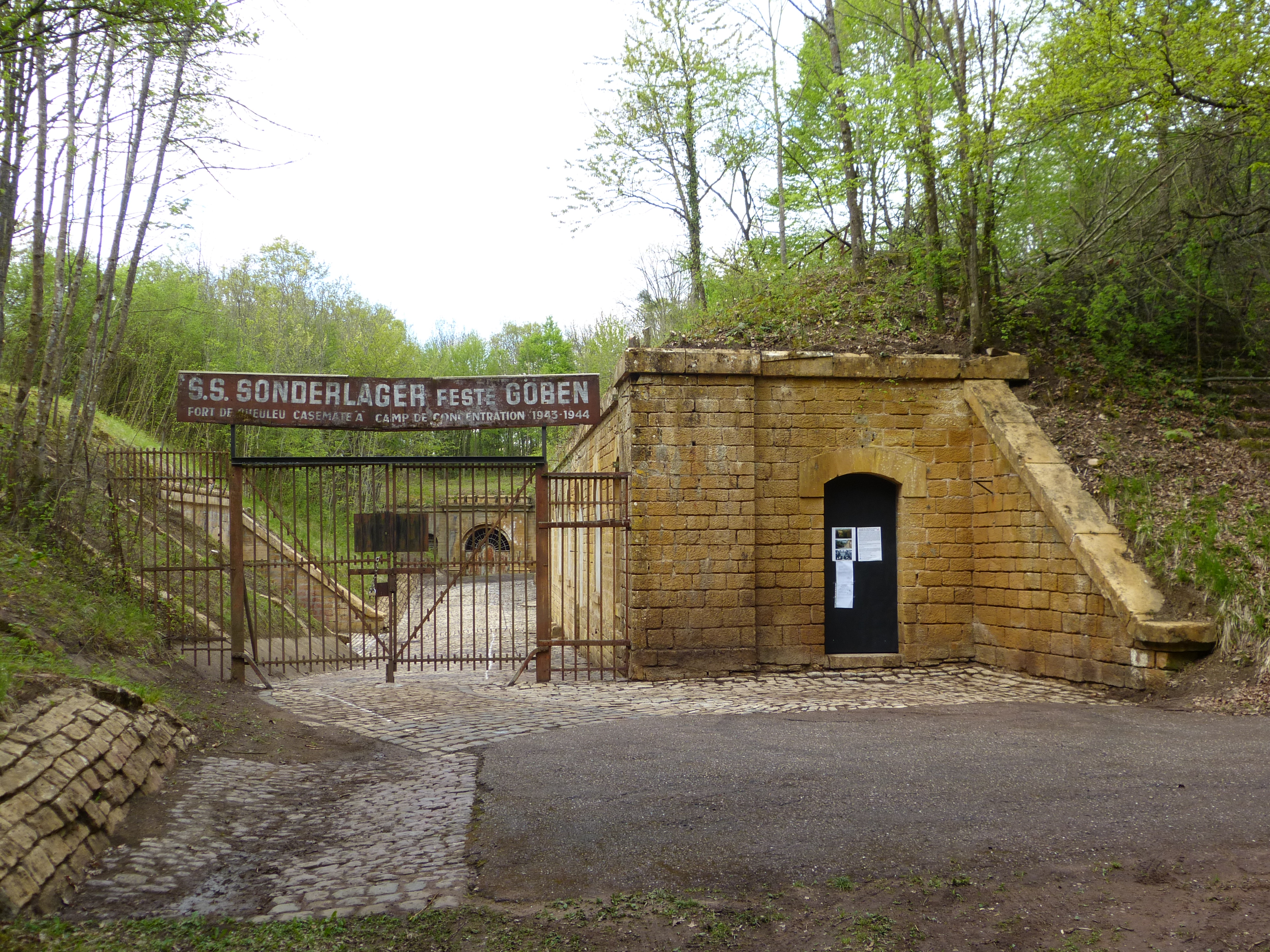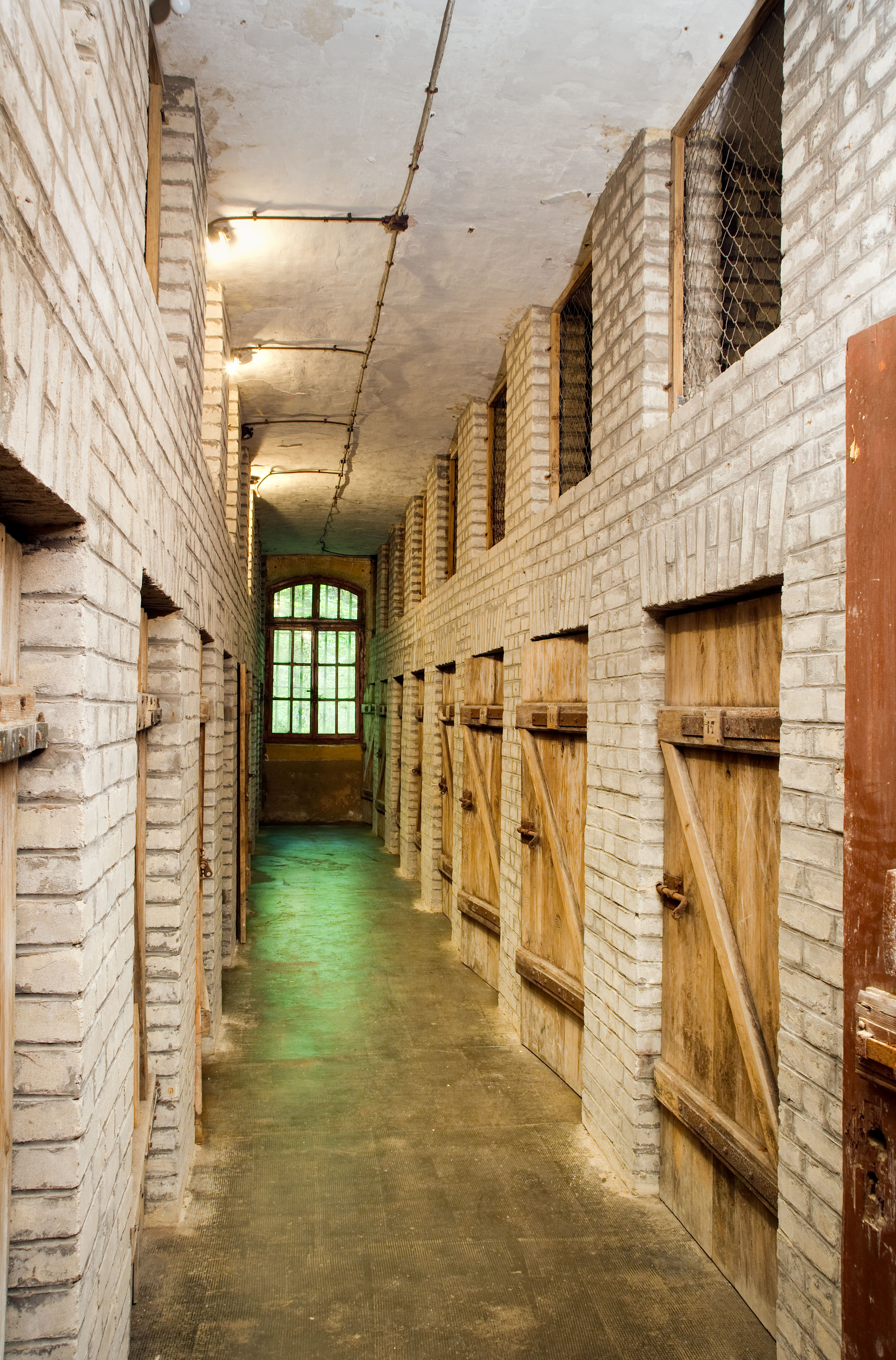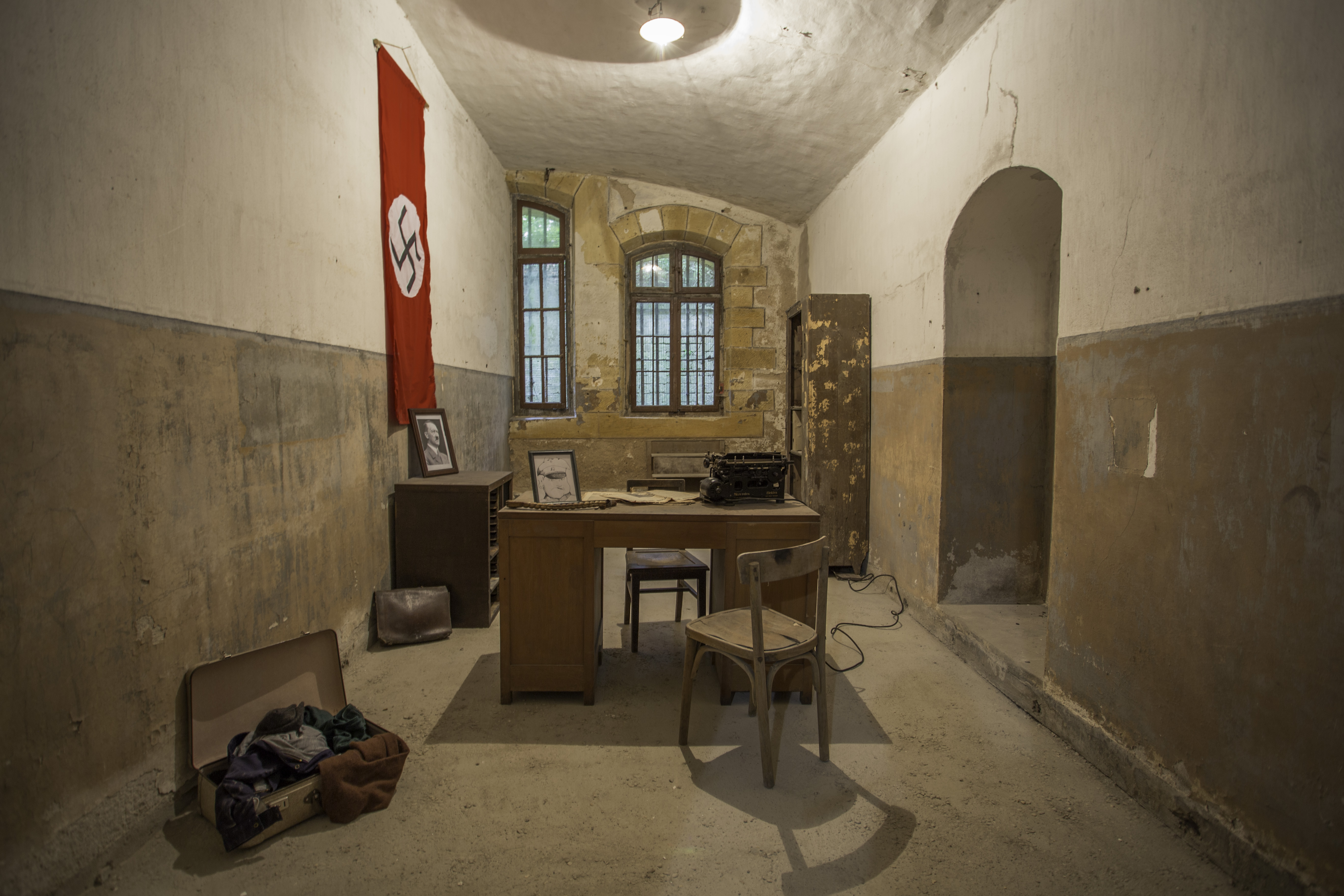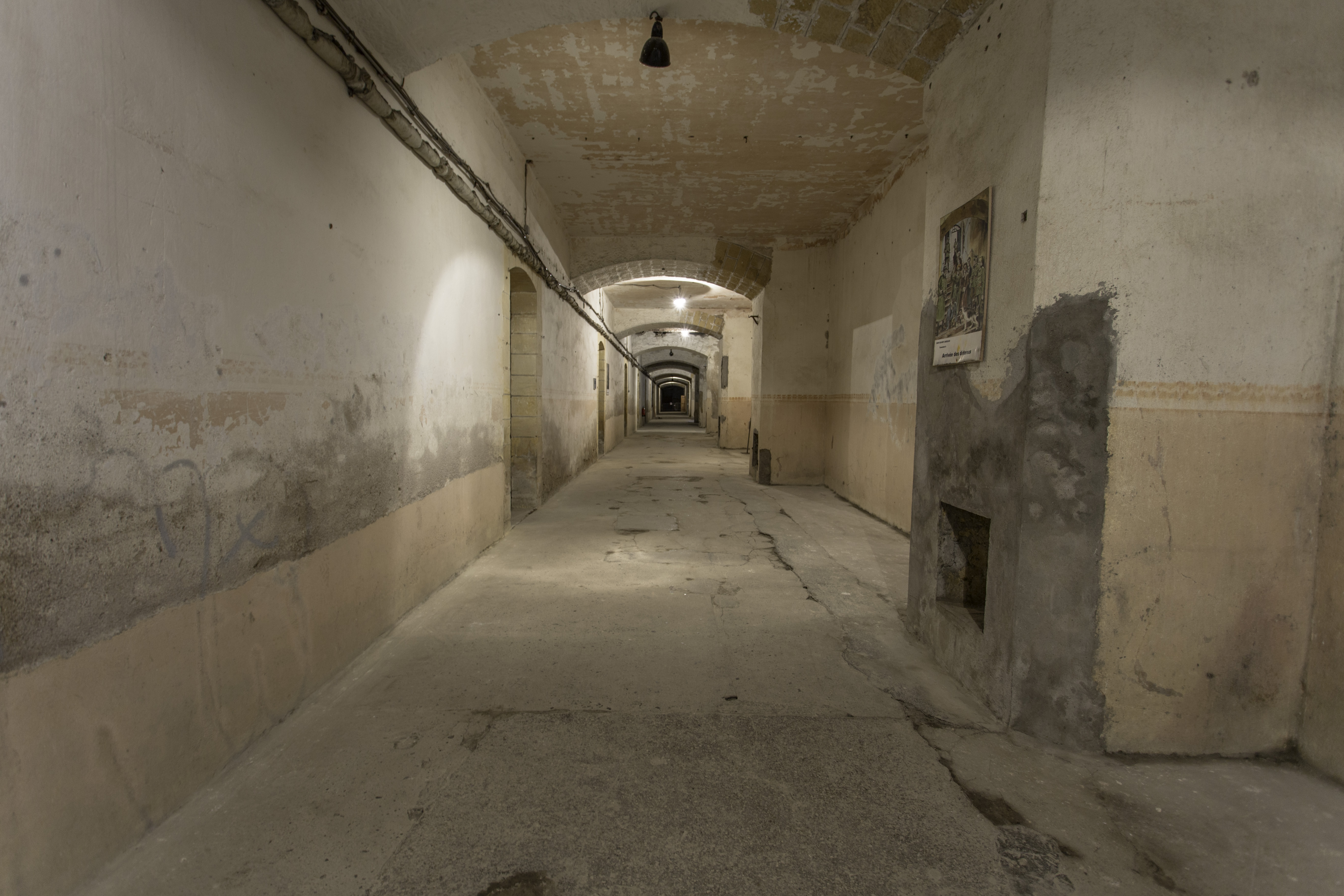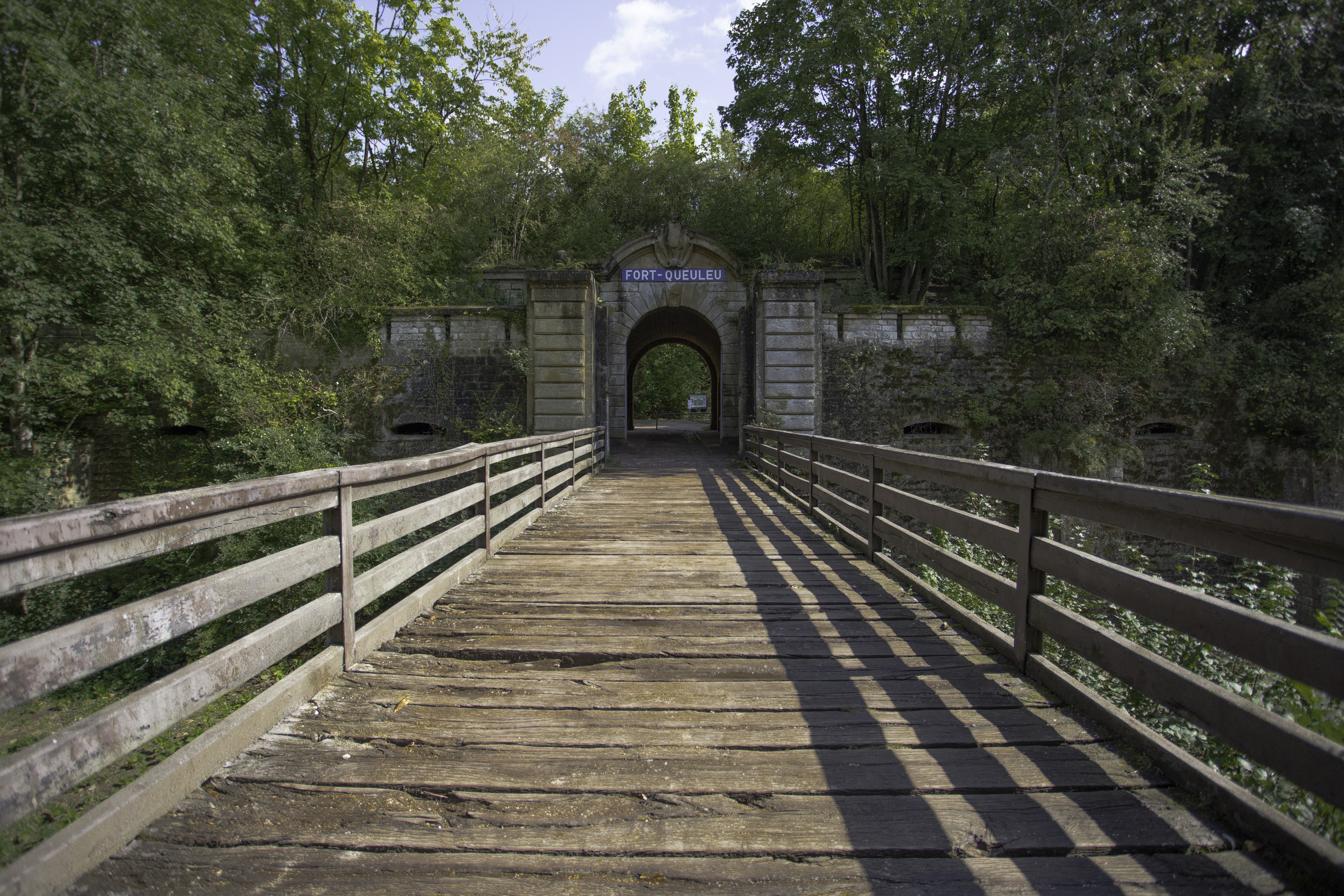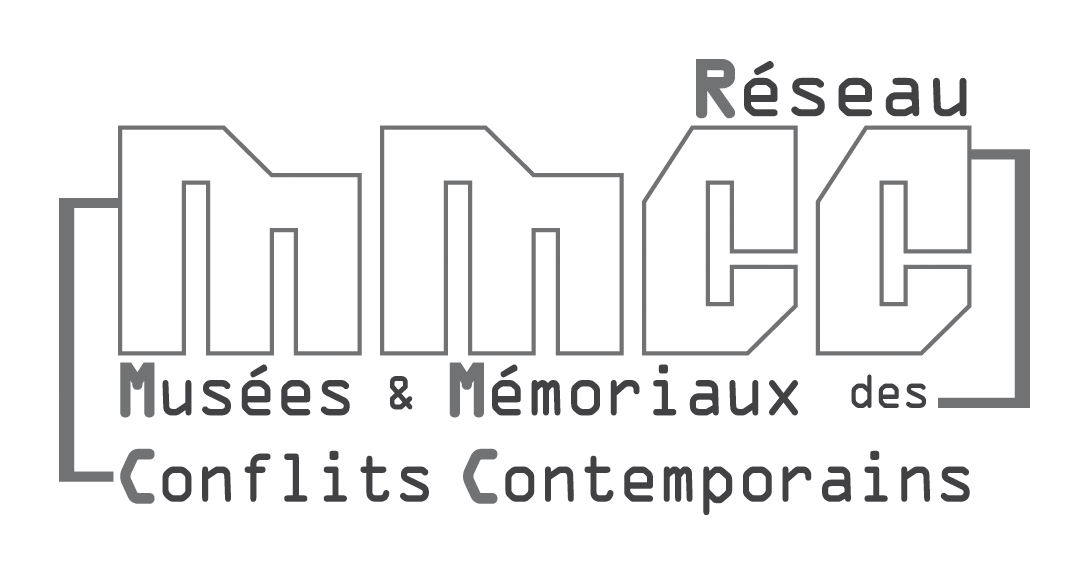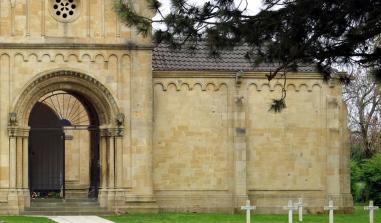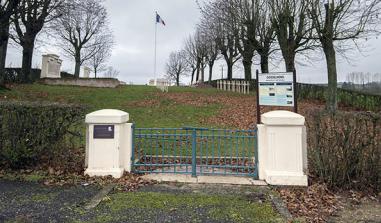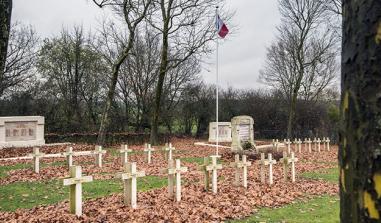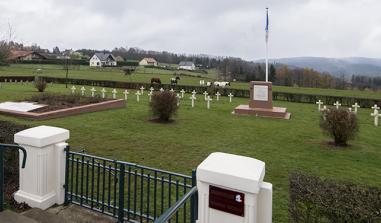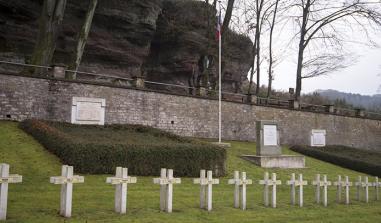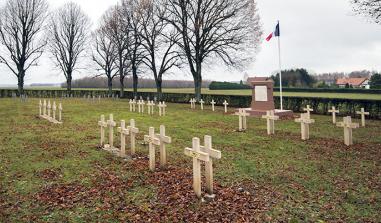Fort de Metz-Queuleu
A prisoner camp, concentration camp, special camp and guarded residence camp
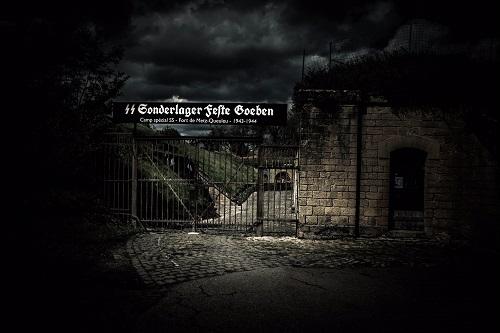
©Fort de Metz-Queuleu
? ? Dates for your diary > Latest news ? Guided tours ?Conferences & film screenings Fort de Queuleu website
The Fort de Queuleu was part of the first chain of fortifications around Metz. Its construction, begun by the French between 1867 and 1868, was largely resumed by the Germans following the annexation of Alsace-Lorraine.
Between October 1943 and August 1944, a camp spécial (‘special camp’) run by the Gestapo was installed in Barracks II/Pillbox A. The camp was used for the internment of Resistance fighters, saboteurs, smugglers, hostages and those who tried to avoid the compulsory labour camps in Germany.
Conditions were horrific: the prisoners were interrogated under torture, and cooped up blindfolded with their hands and feet bound. Thirty-six people died here, while four managed to escape.
Between 1 500 and 1 800 prisoners were held here before being sent to concentration camps or prison, or sentenced to death. After Liberation, the camp was used as a centre de séjour surveillé (‘guarded residence centre’) between December 1944 and March 1946.
A French fort adapted by the Germans which was part of the first line of defences around Metz (1867-1918)
The Fort de Queuleu was part of the first chain of defensive fortifications around the city of Metz. Its construction, begun by the French under the Second Empire, in 1867, was largely resumed by the Germans following the annexation of Alsace-Lorraine after the Franco-Prussian War (1870-71). The fort had been occupied by French troops during the siege of the city between August and October 1870. The barracks, powder magazines, artillery positions, adjoining batteries, galleries of countermines and shelters all bear witness to the changes in military architecture and the advances in weaponry between the late 19th and early 20th centuries. Meanwhile, the central cavalry barracks constitutes a very fine example of Séré de Rivières architecture in Metz.
However, with the construction of Metz’s second chain of fortifications, beginning in 1899, the Fort de Queuleu lost its strategic importance and only minor alterations were made to it. As a result, the fort remains as it was in the second half of the 19th century.
During the First World War, it may well have been used by the Germans as a camp for French prisoners of war, although there is little information available on the subject. A complex network of trenches preserved outside the fort is evidence of the defences built by the Germans to safeguard Metz between 1914 and 1918.
A Nazi concentration camp in Metz (1943-1944)
During the Second World War, the fort served as a barracks for the soldiers of the Maginot Line. Following the defeat of 1940, it was briefly used as a detention camp for prisoners of war (a Stalag). Between March 1943 and September 1944, it went on to be used as a KZ-Außenkommando, or ‘subcamp’, subordinated to the Natzweiler-Struthof concentration camp, in Bas-Rhin, mainly for use by the SS. A hundred prisoners were held here, mostly German common-law criminals and Poles. Some were put to work on building the Metz-Frescaty airbase. It was one of the Reich’s westernmost concentration subcamps.
A special camp at the centre of Nazi repression in Moselle (1943-1944)
Between October 1943 and August 1944, a Sonderlager, or ‘special camp’, run by the Gestapo was installed in Barracks II. Between 1 500 and 1 800 prisoners (men and women) were interrogated and interned there before being sent to concentration camps (Natzweiler-Struthof, Dachau, etc.), ‘re-education’ camps (Schirmeck) or prisons. Among them were Resistance fighters, saboteurs, smugglers, hostages, those who tried to avoid the compulsory labour camps in Germany, and Russian prisoners. Most were held in overcrowded cells, unable to wash and not allowed to speak or move, under the brutal supervision of SS guards and camp commandant Georg Hempen. Resistance leaders were kept in solitary confinement - dark, dank dungeons to which only the commandant had access. The SS officers ‘industrialised’ interrogation and used torture. The conditions in which the prisoners were held were horrific, and most were cooped up blindfolded with their hands and feet bound. Thirty-six people died in the fort, while four managed to escape, in April 1944.
An important monument from the Battle of Metz (1944)
During the liberation of Metz, the fort had its baptism of fire between 17 and 21 November 1944, in fighting between the US army and German troops aided by the Volkssturm (armed civilians, First World War veterans, members of the Hitler Youth, etc.), who were entrenched here. The fort was severely damaged in the bombardment, before finally surrendering.
One of the biggest ‘guarded residence centres’ (1944-1946)
The fort was used as a centre de séjour surveillé, or ‘guarded residence centre’, by the French government between December 1944 and March 1946. Initially reserved for German civilians and their families, the site went on to serve as a detention centre for administrative internees arrested on charges of collaboration, propaganda, anti-patriotism or informing (up to 4 400 people were interned here). It was one of the largest centres of its kind in France. People of various nationalities were interned here, including French, Germans, Italians, Luxembourgers, Poles, Spaniards and Yugoslavs.
A camp for German prisoners of war (1946-1947)
Between 1946 and 1947, the Fort de Queuleu was a camp de prisonniers (‘prisoner camp’) for German soldiers. Assigned this purpose on 1 June 1946, it was subordinated to Depot 211 for prisoners of war in Metz. Run by Monsieur Massu, the camp was visited by the Red Cross on 13 February 1947. One hundred and forty-five prisoners were being held there at the time, in Barracks II/Pillbox A. The accommodation was heated, the rations were adequate and there was hot water for washing. An infirmary was run by Dr Dietrich Ostler. The prisoners were assigned to unloading goods trucks, clearing a canal and carrying building materials.
A camp for Indochinese workers (1948-1950)
To replace the mobilised workforce, the ‘Mandel Plan’, drawn up in 1938 by the then Minister for the Colonies, Georges Mandel, provided for colonial workers to be brought to France to take the place of those men who had been called up to fight. Around 20 000 workers from French Indochina arrived in France at the beginning of the Second World War. The labour ministry’s indigenous, North African and colonial labour service (MOI) was put in charge of recruiting the necessary colonial workers, shipping them to France and allocating them to the national defence industries. Most were recruited by force from among the poor peasantry of the protectorates of Annam and Tonkin and the colony of Cochinchina. These unskilled workers were used mainly as forestry, agricultural and industrial labour, in particular in the armaments factories and powder magazines. After the French defeat, they were lodged in huge camps in the Free Zone, where they were subjected to military discipline as well as very harsh living conditions. At Liberation, the majority wanted to return home as soon as possible, but their repatriation was delayed due to postwar disorganisation and events affecting French Indochina. As a result, several hundred Indochinese workers occupied the Fort de Queuleu between 1948 and 1950: 537 in October 1948, 438 in December 1948, 323 in March 1949, 296 in April 1949, 188 in May 1949, 163 in August 1949, 176 in September 1949, 213 in October 1949, 156 in December 1949, 191 in January 1950, 35 in April 1950 (repatriations to Vietnam gathered pace in this period) and 79 in May 1950. The suffering of exile gave way to exasperation and anger. Echoing the Vietminh independence movement in Indochina, the Indochinese workers in metropolitan France called for emancipation and equal rights with other workers. Graffiti on the walls of the Fort de Queuleu is a sign of their presence here.
A remembrance site (since 1971)
At the entrance to the fort stands a memorial to resistance and deportation, inaugurated on 20 November 1977, which marks the entrance to the remembrance site. The monument, containing the ashes of an unknown deportee, was designed by Metz-born architect Roger Zonca, who was involved in the reconstruction of the area.
Since 1971, the protection and promotion of the Fort de Queuleu in Metz has been the task of the Association du Fort de Metz-Queuleu pour la mémoire des internés-déportés et la sauvegarde du site (formerly the Amicale des anciens déportés du fort de Queuleu et de leurs familles), made up of volunteers.
Click on the photo of your choice to expand it
From left to right: Entrance gate and entrance to the Nazi special camp - Cells
- Area damaged by the bombardments of 1944 - The commandant’s office
- Corridor of the camp - Main access bridge to the Fort de Queuleu.
Sources : ©Fort de Metz-Queuleu
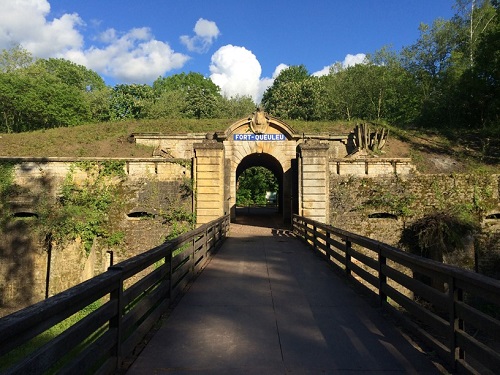
©Association du fort de Metz-Queuleu
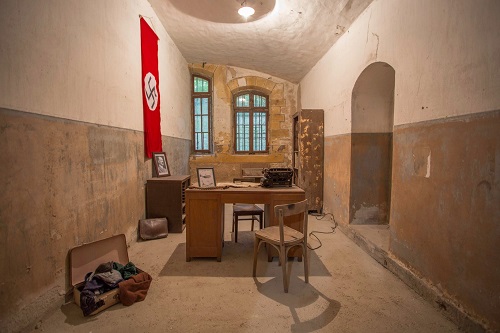
©Association du fort de Metz-Queuleu
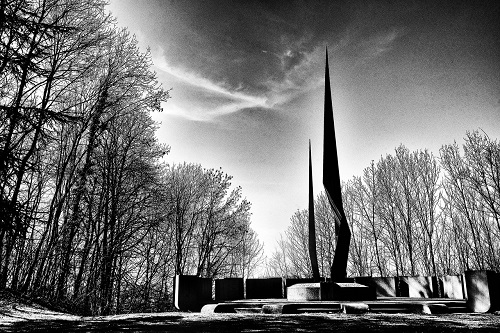
©Association du fort de Metz-Queuleu
Practical information
Rue du Fort de Queuleu/Allée Jean Burger - 57070
Metz
+33 (0)6 95 67 42 80
Sunday afternoon, 2 pm to 5 pm/6 pm (according to season) http://www.fort-queuleu.com/visites/
Late December to early January Office de Tourisme de Metz - 2 place d’Armes - CS 80367 - 57007 Metz Cedex 1 - Tel.: +33 (0)3 87 39 00 00 - Fax: +33 (0)3 87 36 59 43 - Email: contact@tourisme-metz.com


